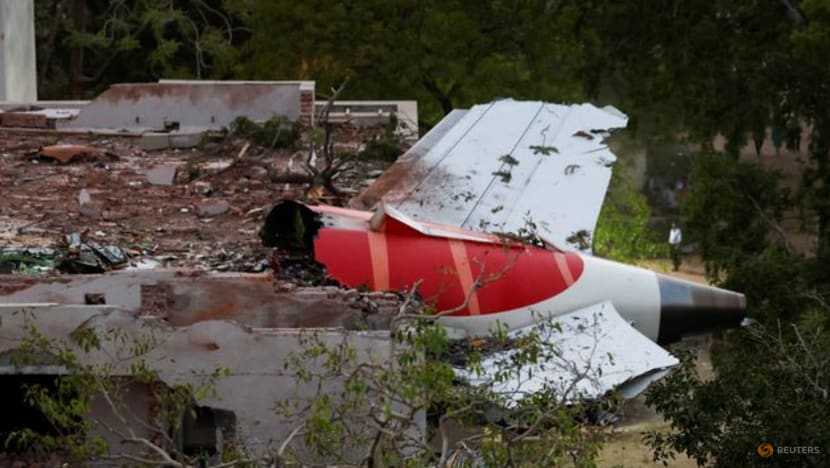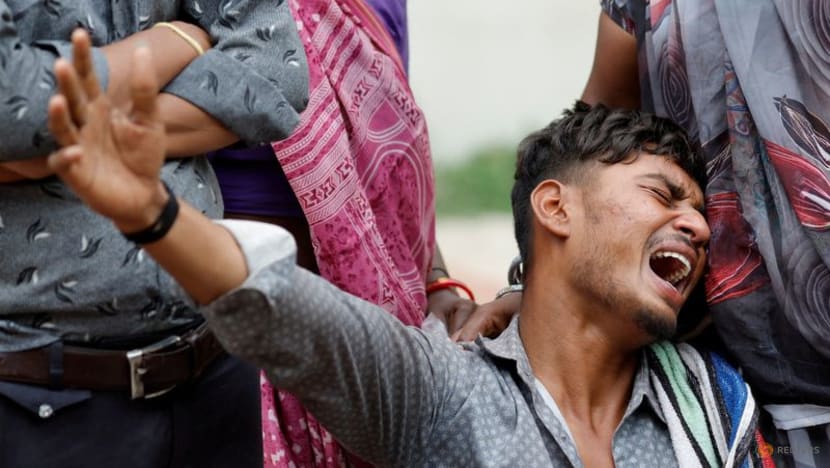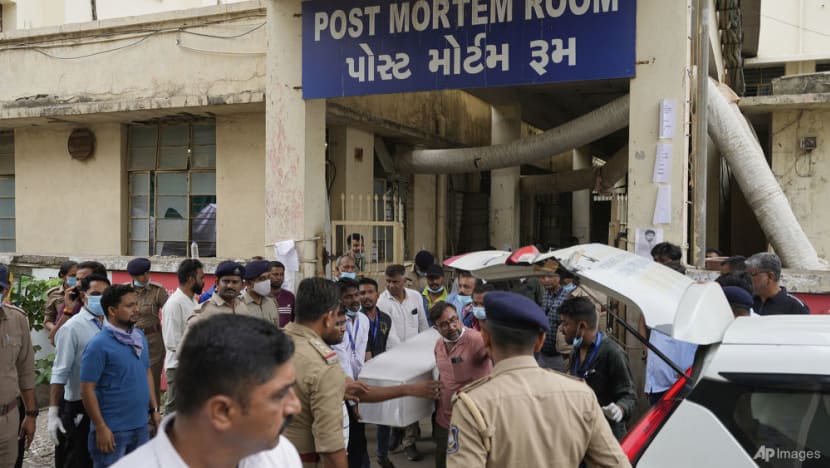Commentary: Deadly plane crash tests not just Air India, but its Singapore partner too
Tata Group’s effort to revive Air India, with backing from Singapore Airlines, faces renewed scrutiny following the deadly crash, says financial journalist Ven Sreenivasan.

A tail of an Air India Boeing 787 Dreamliner plane that crashed is seen stuck on a building after the incident in Ahmedabad, India, Jun 12, 2025. (Photo: Reuters/Amit Dave)

This audio is generated by an AI tool.
SINGAPORE: The crash of London-bound Air India flight 171 shortly after take-off from Ahmedabad on Thursday (Jun 12) was a tragedy of staggering proportions.
The plane crashed into a medical college hostel during lunch time, just minutes after taking off from the airport. More than 240 lives were lost, including passengers, crew and people on the ground. It is among India’s worst aviation disasters.
Numerous videos have been circulating and many speculative theories are being aired on Indian media, but as of the time of writing, the cause of the crash remains unknown. It’s important not to cast blame before the facts are known.
The Air India crash though is a major test of Indian conglomerate Tata Group’s efforts to transform the beleaguered carrier into a “world-class airline” since it took back the reins three years ago. It also puts India’s broader aviation ambitions under scrutiny at a time when the country is investing heavily in expanding domestic and international air travel.
Singapore Airlines (SIA) - which holds a 25.1 per cent stake in Air India group after its joint venture carrier Vistara was merged into the reformed Indian carrier in 2022 - may also face questions about reputational risk in a high-stakes market.
SIA’s shares fell as much as 2.1 per cent on Friday.
“ABSOLUTE SHAMBLES”
Founded in 1932 by entrepreneur JRD Tata and nationalised by the Indian government in 1953, Air India was again taken private in 2022 by the Tata Group.
At the time, SIA’s Vistara stake converted to 20 per cent in the new Air India group. SIA bought another 5.1 per cent for S$360 million. The Singapore carrier group also committed to investing another S$880 million to build up the Indian carrier, which has been led by former SIA staffer and Scoot founding CEO, Campbell Wilson, since 2022.
The new Air India - now well-capitalised, operating a fleet of 198 planes with an order of 570 more and controlling roughly 30 per cent of India’s domestic market - was meant to be a rising star in one of the world’s fastest-growing aviation sectors.
Mr Wilson had often spoken of turning Air India into “one of the best airlines in the world”. It was no doubt challenging, seeing as how Mr Wilson described the airline as being "just in absolute shambles" when Tata resumed ownership.
Now, the crash of the Boeing 787-8 plane has raised hard questions, chief among them the airline’s historically poor safety record.
Prior to its privatisation in 2022, decades of neglect and under-investment caused Air India to have one of the worst safety records among Indian - if not Asian - carriers, with six accidents and 49 serious incidents between 2013 and 2022.
That said, the airline has made huge strides in safety over the past three years following its takeover by Tata and SIA. In fact, it received its International Air Transport Association's IOSA safety certification last year and has introduced a slew of new crew safety protocols. AirRatings.com gives the airline a top seven out of seven ranking for safety.
Even if investigations eventually absolve the airline of fault, the crash will nonetheless have punctured the fragile confidence that had begun to build.
SIA’S AMBITIONS IN INDIA
There is no doubt some will question whether SIA did the right thing to invest in the Indian carrier with such a checkered history, at least at such an early stage.
But here are some basic facts.
SIA’s investment was a purely commercial decision to have a foothold in what aviation experts agree is among the world’s largest and fastest growing aviation markets.
India, with a population of over 1.4 billion, is the world’s third-largest air travel market, after China and the United States. With a fast-rising middle class enjoying rising incomes and economic growth that is surpassing most other large economies of the world, this is a country with huge aviation growth potential - especially since it currently accounts for just over 4 per cent of global air traffic.
SIA did not get to be among the world’s most successful airline by taking unnecessary risks. It went into this venture after considering all the possibilities. And did so with one of India’s most reputable business houses, the Tata Group.
That Tata came out to take ownership of this tragedy right at the beginning, showing empathy for the people on board and on the ground and offering 10 million rupees (US$116,200) to each family who lost a loved one in the crash, speaks volumes of the ethos and standing of this company.
That does not diminish the scale of the tragedy.




At this point, no one knows what caused the accident. The answers lie ahead and will come after months of painstaking investigation. Lessons will be - and must be - learnt.
Despite the scale of this tragedy, India’s aviation sector continues to hold long-term potential.
For SIA, expanding beyond a single Singapore-centric hub player will inevitably involve engaging with complex markets like India. That brings not only opportunity, but also risk, responsibility and, at times, immense difficulty.
Ven Sreenivasan is a former editor and journalist who has covered financial markets, economic and corporate news and aviation for more than 30 years.
















